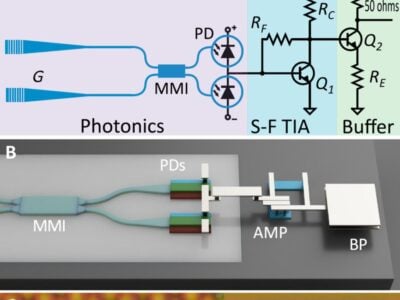
Quantum computer with 46 qubits simulated
Once the first practical quantum computers will be available in the future, software developers and engineers will not have to start from scratch. On conventional digital computers, the functionality of relatively large quantum computers can already be simulated today. The computational effort, however, is enormous. With each simulated qubit, the need for storage doubles.
“There are currently only a few supercomputers in the world that have such a large memory, sufficient computing cores and reasonably fast network connections to even simulate a system of 45 qubits – that was the previous world record,” explains Professor Kristel Michielsen from Jülich Supercomputing Center (JSC). “It’s just as important to get the software running efficiently on the highly parallel architectures of modern supercomputers.” For their calculations, Michielsen and her team used the Jülich supercomputer JUQUEEN as well as the world’s fastest supercomputer Sunway TaihuLight at the Chinese National Supercomputing Center in Wuxi.
Many program codes lose efficiency when computed in parallel on a multiple compute nodes. By contrast, the software that has been developed by Michielsen and its partners scales almost perfectly: it shows hardly any performance losses, even if several million cores are used simultaneously, as in the case of the Chinese supercomputer Sunway TaihuLight.
Michielsen has already achieved several records in the past. In 2010, she was the first to simulate a quantum computer with 42 qubits on the then Jülich supercomputer JUGENE. A world record, which she surpassed in 2012 with the simulation of a 43-qubit system on the successor to JUGENE, the supercomputer JUQUEEN. Most recently, together with partners from universities in Groningen, Tokyo and Wuhan, she simulated a quantum system with 45 qubits, surpassing an earlier record from the spring of 2017. However, this already required a memory of more than half a petabyte or half a million gigabytes.
The recent breakthrough, the simulation of a quantum computer with 46 qubits, was preceded by an adaptation of the program code. The representation of quantum states now requires only 2 instead of 16 bytes, without significantly reducing the accuracy of the results. The simplification, which equates to a reduction in storage requirements by a factor of eight, can also benefit other users.
The new version of the simulation software now makes it possible to simulate a quantum computer with 32 qubits on a simple laptop computer with 16 gigabytes of RAM. Scientists use such simulations to develop algorithms for future quantum computers and test them on relatively large quantum computers. In the simplest case, the simulated quantum computers are ideal quantum systems that behave exactly as predicted by the rules of quantum mechanics. In addition, simple error models can be used to artificially generate disturbances, as would be expected in reality from a true quantum computer.
Related articles:
Microsoft unveils free Quantum Development Kit preview
Quantum internet moves closer to reality
Intel delivers 17-qubit quantum computing test chip
 If you enjoyed this article, you will like the following ones: don't miss them by subscribing to :
eeNews on Google News
If you enjoyed this article, you will like the following ones: don't miss them by subscribing to :
eeNews on Google News




